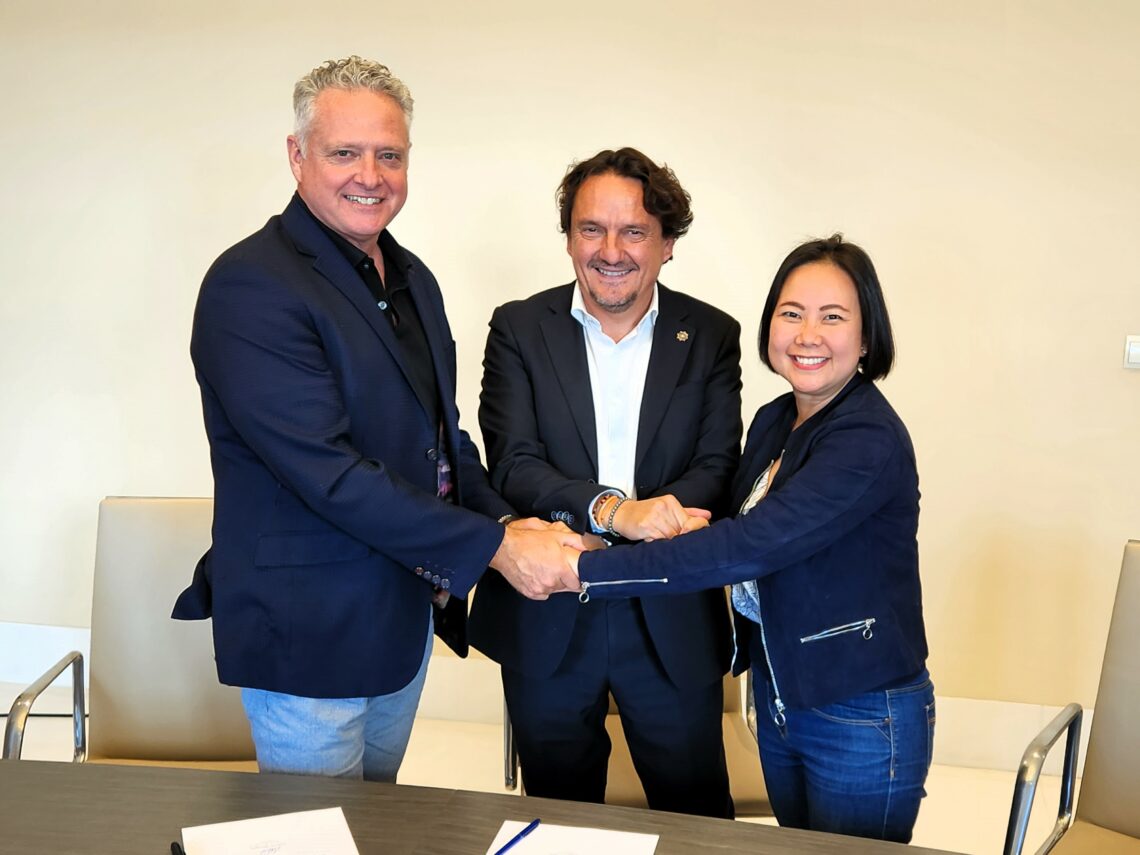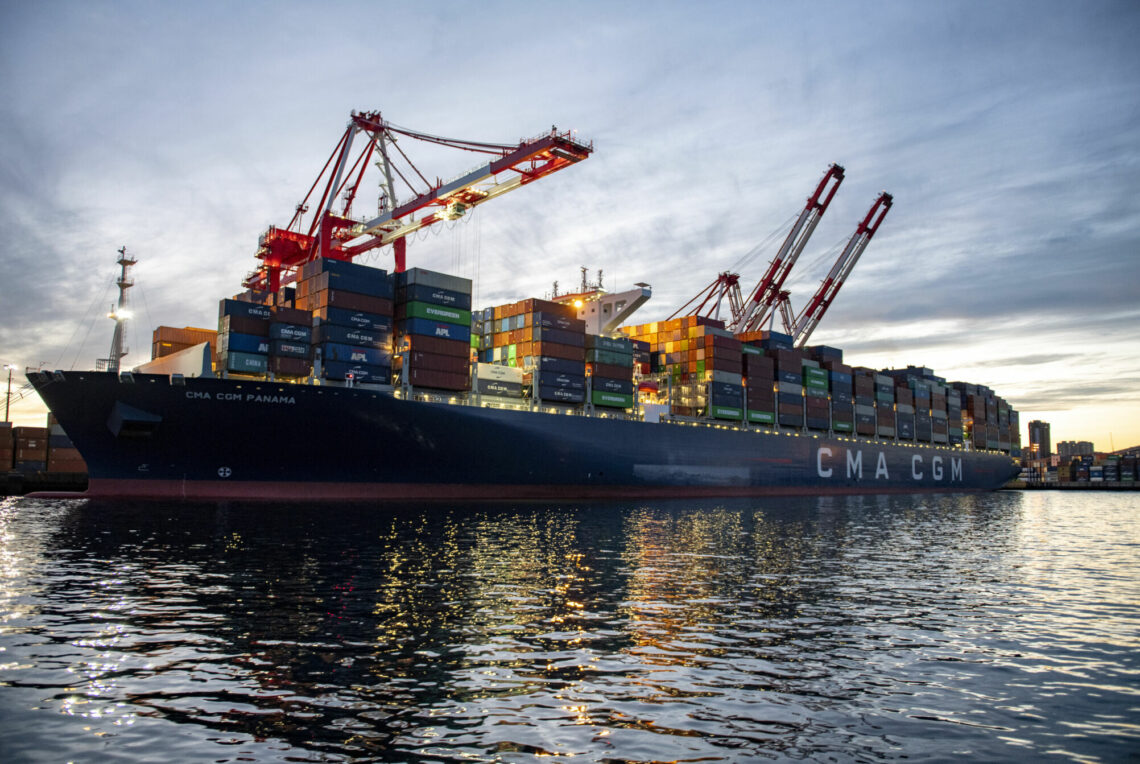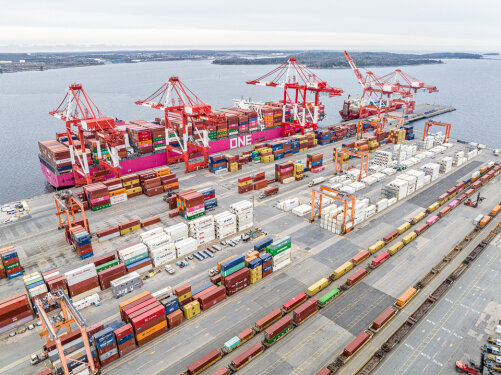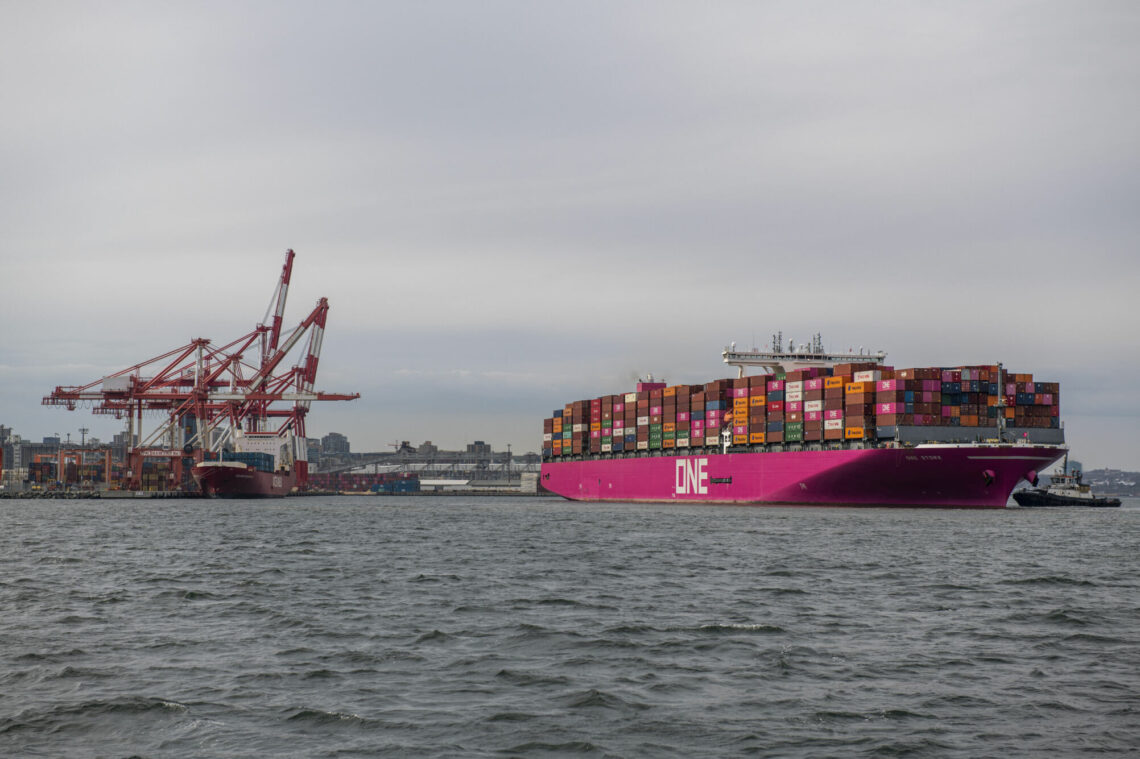Introduction to our project:
Green Corridors were introduced through the Clydebank Declaration, which launched at COP26 in Glasgow in 2021. Their intent is to support the establishment of zero-emission shipping routes between two ports and help decarbonize the maritime sector. Ports play a central role in this idea, working together with peers and other maritime and energy stakeholders. In order to understand the impact of these initiatives in port cities and explain their strategies and goals, the AIVP is teaming up with the research group PortCityFutures to develop a series of interviews with its members who are active in different green corridors. Ultimately there will be a final publication to help port city stakeholders understand what green corridors are, what purpose they serve, and most importantly their potential impact on the port city, hinterland transportation and services, and even their spatial and governance impact on the ports themselves.
The Port of Halifax is a key participant in the Halifax-Hamburg Green Corridor. In this interview, the port shares its views on a number of key issues.
Interview with Captain Allan Gray, Chief Executive Officer of the Port of Halifax.
What was your motivation to join the Green Corridor initiative between the ports of Halifax and Hamburg?
The Port of Halifax (Halifax) and the Port of Hamburg (Hamburg) are vital gateway ports in their respective regions and are key maritime entry and exit points for goods moving between North America and Europe. The Ports are connected through two distinct weekly services, ACL (Grimaldi) and The Alliance’s AL5 Service (Hapag Lloyd, O.N.E., Hyundai, and Yang Ming), both of which make twice weekly calls at Halifax and generate 466,000 tonnes of carbon dioxide (CO2) per year. Hamburg holds the fourth position in global port volumes for the Port of Halifax, which amounts to 20,057 laden TEU, with 14,060 for imports and 5,997 for exports.
In 2022, Halifax and Hamburg signed an MOU committing to decarbonize their respective route, potentially enabling the transportation of green hydrogen (H2) and its derivatives. Together, we will work to improve port infrastructure for bunkering, support the export and import of green hydrogen, foster partnerships across the value chain, and share knowledge and technology through regular communication and joint working groups. Our partnership with Hamburg plays a key role in both Canada and Germany’s efforts to advance their H2 economies and enhance bilateral ties. Through the “Hydrogen Alliance,” both countries have committed to facilitating investment in hydrogen projects, bolstering secure H2 supply chains, creating a transatlantic supply corridor, and exporting clean Canadian hydrogen by 2025 to contribute to German energy security.
The Halifax-Hamburg shipping corridor represents a significant opportunity to advance the Government of Canada’s hydrogen development and marine decarbonization commitments, and for the Port of Halifax, which is Canada’s only East Coast Ultra Class vessel port, to remain competitive at a time when governments, industry, and customers along the supply chain are demanding cleaner modes of container transportation.

Besides the port authorities, who are the key actors in the Green Corridor? Which local actors are you involving (e.g. the municipality, citizens or local organisations)?
Greening the corridor requires accelerated collaboration between both port authorities, the shipping lines that travel the route, and the fuel providers willing to share low-level risks before scaling up. It also requires public sector support and the participation of private sector players across the entire supply chain. We are working with :
- The Hamburg Port Authority
- PSA International’s subsidiary, PSA Halifax, that operates both container terminals (PSA Halifax Fairview Cove and PSA Halifax Atlantic Hub)
- CN, the largest railway in Canada and the sole intermodal service provider at the Port of Halifax
- First Nations that operate businesses in Nova Scotia that benefit their communities
- Shipping lines that travel the Halifax-Hamburg corridor
- EverWind Fuels
- Companies engaged in producing hydrogen, deploying hydrogen-powered assets on Port lands, and transitioning their trucking fleet to hydrogen power
- Halifax Regional Municipality which serves the residents of Halifax and provides fire prevention and emergency response services through Halifax Regional Fire and Emergency
- And the Port of Halifax and Port of Hamburg’s sister innovation centres of excellence, The PIER and homePORT Hamburg
Together, these entities have invested billions of dollars throughout the supply chain and transportation network. Facilitated by imports and exports through the Port of Halifax, including those that travel the Hamburg-Halifax corridor, these organizations generate thousands of jobs throughout Canada. Each has unique capabilities in shipping, port operations, energy production/distribution, workforce development, transportation and logistics, and port innovation – all of which are essential to a project of this size and complexity.

Why was the focus on bunkering green hydrogen and its derivatives chosen as the main focal point for this Green Corridor?
The Ports are preparing for the delivery of the first alternative fuel-powered vessels. Hamburg is expecting to bunker methanol as early as 2024 and its ammonia and e-fuel import terminal will come online in 2026. Meanwhile, EverWind Fuels is developing one of the world’s largest hydrogen and ammonia production facilities in Cape Breton, Nova Scotia. Initial production is scheduled for 2025 and full production the year after. EverWind’s site is a 15–18-hour voyage to Halifax and Halifax is a twelve-hour deviation from the Great Circle Route. The Port of Halifax and EverWind have an MOU in place to explore opportunities in green fuel production and bunkering, power generation, and energy storage.
At the Port of Halifax, we could be a secondary off-taker of hydrogen and its derivatives, potentially facilitating the movement of these fuels by coastal tanker to Halifax where it could be stored, distributed, and bunkered. Container ships may opt to use these services for commercial and logistical reasons even if cargo offloading is not required.

Canada is one of the only countries with a Green Shipping Corridor Program, which aims to decarbonize the maritime sector. How has this supported you in the planning and implementation of your Green Corridor and potentially in connecting it to the hinterland logistics?
The Government of Canada’s Green Shipping Corridor (GSC) Framework, released in 2022, sets out a common vision for Canada to make sure that green shipping corridors like those established between Halifax and Hamburg, Montreal and Antwerp, partners in the Great Lakes and the St. Lawrence, and ports in the Pacific Northwest and Alaska are implemented consistently. Transport Canada’s GSC Program, formally announced in December 2023, will provide $149.7 million over five years, starting in 2023-24, to spur the next generation of clean ships, invest in shore power technology, and prioritize low-emission and low-noise vessels at ports.
The Port of Halifax is engaged with Transport Canada and its other partners on the development of the Halifax-Hamburg shipping corridor. We submitted a funding application to Transport Canada (TC) in March 2024 to accelerate the greening of the Halifax-Hamburg shipping corridor. TC support would allow the Port of Halifax and its partners to prepare for the hosting and potential bunkering of alternative-fueled vessels, electrifying equipment, deploying hydrogen on port lands, and developing the regulatory regimes to make this happen. This is a significant opportunity to work with Transport Canada and other regulators and share learnings with ports across Canada.
At the Port of Halifax, we are actively scoping out ways to improve customers’ access to hinterland markets. This, however, is not within the scope of the green shipping corridor initiative.

The Port of Halifax hosts The PIER lab (Port Innovation, Engagement, and Research). How are the living lab and its start-ups involved in and impacted by the Green Corridor?
In 2021, we established Canada’s first sector-focused living lab for the transportation and supply chain industry, called The PIER, which stands for Port Innovation, Engagement and Research. The PIER brings together an ecosystem of organizations looking to solve complex problems related to port logistics, supply chain and transportation. As well, we aim to focus on regulatory change requirements to enable innovation while always looking for ways to decarbonize port-related activities through innovative solutions.
We can write a challenge statement and through The PIER, share it with industry and innovation players, including small businesses, start-ups, and universities, that may be able to help us solve the problem. Decarbonizing the supply chain is one of those big problems that cannot be solved by one company on its own. The PIER is an excellent companion to the work we are doing with Hamburg to develop a Green Shipping Corridor.
Hamburg has a similar innovation hub called homePORT. In October of 2023, homePORT, The PIER and Opentop at the Port of Valencia announced they are working toward the design and setup of the first network of port innovation hubs, called PIN, for Port Innovators Network. We believe that PIN has the potential to revolutionize the port industry by driving and facilitating the adoption of innovation in the global port system.





